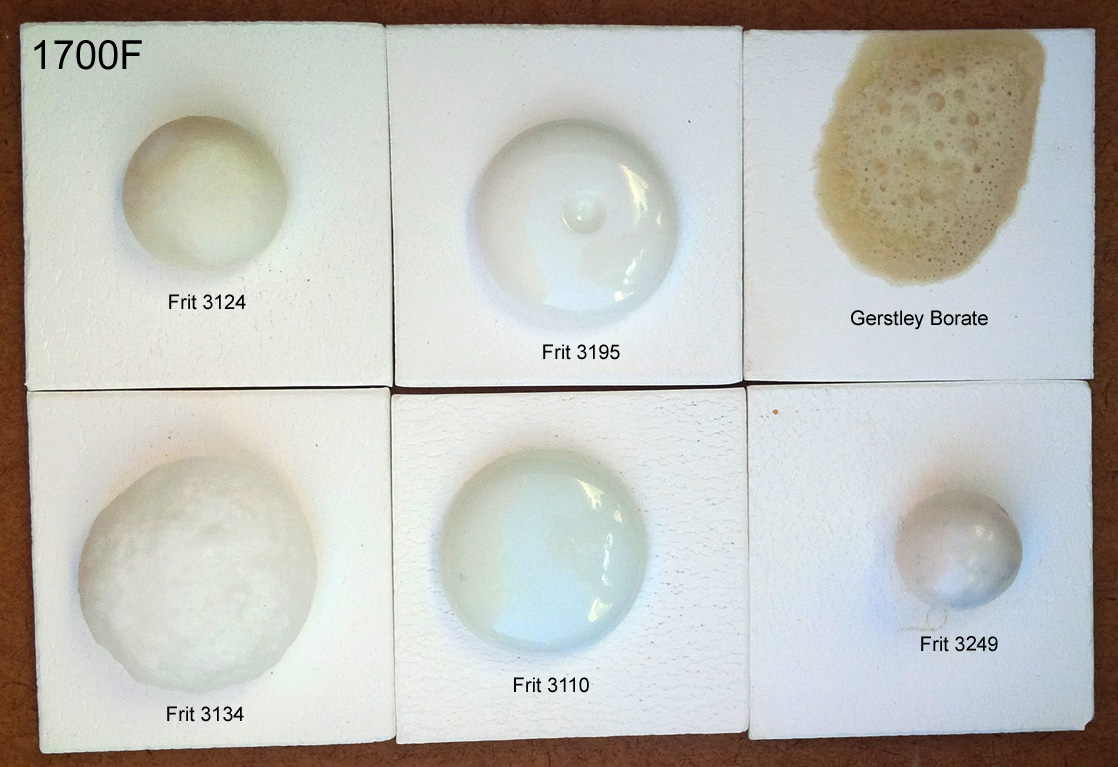| Monthly Tech-Tip | No tracking! No ads! | |
All Temperature Numbers Temperature Listing
870-900C (1598-1652F)
Gerstley Borate Melts Suddenly
It expands significantly between 1550 and 1600F and is melted by 1650. Through the entire heatup from 500F to 1600F it generates gases, totaling more than 20 percent.
Related Information
These common Ferro frits have distinct uses in traditional ceramics

This picture has its own page with more detail, click here to see it.
I used Veegum to form 10 gram GBMF test balls and fired them at cone 08 (1700F). Frits melt really well, they do have an LOI like raw materials. These contain boron (B2O3), it is a low expansion super-melter that raw materials don’t have. Frit 3124 (glossy) and 3195 (silky matte) are balanced-chemistry bases (just add 10-15% kaolin for a cone 04 glaze, or more silica+kaolin to go higher). Consider Frit 3110 a man-made low-Al2O3 super feldspar. Its high-sodium makes it high thermal expansion. It works really well in bodies and is great to make glazes that craze. The high-MgO Frit 3249 (made for the abrasives industry) has a very-low expansion, it is great for fixing crazing glazes. Frit 3134 is similar to 3124 but without Al2O3. Use it where the glaze does not need more Al2O3 (e.g. already has enough clay). It is no accident that these are used by potters in North America, they complement each other well (equivalents are made around the world by others). The Gerstley Borate is a natural source of boron (with issues frits do not have).
Gerstley Borate is a volatile melting material

This picture has its own page with more detail, click here to see it.
Gerstley Borate (compared with Ferro frit 3124) from 1600-1750F. At 1550F (not shown) it suddenly shrinks to a small ball and then by 1600F it has expanded to double its size. By 1650 it is well melted, but still gassing and bubbling.
| By Tony Hansen Follow me on        |  |
Got a Question?
Buy me a coffee and we can talk

https://digitalfire.com, All Rights Reserved
Privacy Policy
